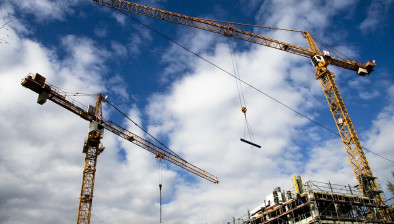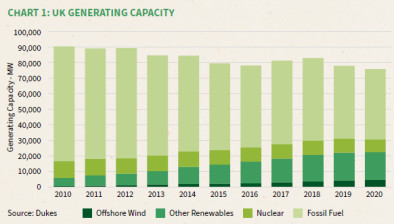Glenigan: Construction project starts up by 124% in Scotland
Scotland achieved the UK’s strongest growth in project starts against the previous year (124%) during the previous three months to the end of July 2021 but the figures were still below 2019 levels, according to the August edition of Glenigan’s Construction Review.

The monthly report provides a detailed and comprehensive analysis of construction data, giving built environment professionals unique insight into results from the three months to the end of July 2021.
Following a growth spurt in the first half of 2021, momentum has started to show signs of slowing down. This recent decline has been led by a sharp fall in private residential and civil engineering work.
Across the UK overall, the value of projects starting on-site averaged £5,497 million per month in the three months to July. Despite being 27% higher than the same period in 2020, it remains 14% lower than the preceding three months in 2021.
This sudden fall can be attributed, in part, to a 19% decline in the value of underlying project (<£100m in value) starts. Although these were up 36% on 2020, the figures are still 24% lower than pre-pandemic levels.
Whilst the value of major projects remained unchanged (£1,740 million per month) against the preceding three months to July, they were still 2% down on 2019 levels.
Planning consents have also seen a slip during this slower period, down 20% against the previous three months. Major planning approvals are more stable, but also witnessed an 8% decrease.
However, on a positive note, planning consent levels remain significantly higher on both 2020 and 2019.
Looking further ahead, the strengthening pattern of main contract awards points to renewed growth in project starts during the second half of the year.
Although the value of main contracts awarded slipped 1% against the previous six months, it remained 43% above the same period in 2019 (82% up on 2020). Putting this into perspective, major contract awards were three-and-a-half times higher than a year ago and 98% ahead of pre-COVID levels.
Despite the m-o-m decline, second quarter output was up 3.3% on the preceding three months.
Further, some areas of activity saw modest growth on Q.1, with RMI work increasing by 2.3% (53.5% ahead of 2020 figures). Much of this is accounted for by non-housing repair and maintenance work, perhaps reflecting the easing of COVID-19 restrictions and calls from Government and business to return to city centre workspaces.
There was also a slight uptick in new-build output (3.9%) in Q.2 against Q.1, with private housing experiencing a marked upward spike of 10.6%.
In line with Glenigan’s previous reviews and indexes, infrastructure has been the strongest performing sector for new work, rising 15.9% against the preceding quarter.
Industrial and commercial sector activity also rose by 3.8% and 0.8% respectively against the first quarter.
The biggest losers were the new public residential and non-residential sectors, which saw a slight dip in output of 1.5% and 1.4% respectively.
Glenigan’s economic director, Allan Wilen, said: “There’s no doubt the slowdown seen over the last three months has been the result of a perfect storm of external events, beyond the industry’s control. Supply chain issues continue to bite and look likely to remain a challenge for the foreseeable future. However, the sector is showing its strength across the board, and this modest slowing of pace is certainly not as serious as many might have predicted.
“With a number of major projects in the pipeline, a potential national green retrofitting programme and core infrastructure remediation work upcoming, there are reasons to stay positive as we look to the second half of 2021 and beyond. Our recent Forecast for 2021-2023 indicates 2022 will see a return to pre-COVID levels of project-starts, and whilst we’re not there quite yet, we’re seeing lost ground being made up at a quicker rate than anyone would have predicted this time last year.”






















